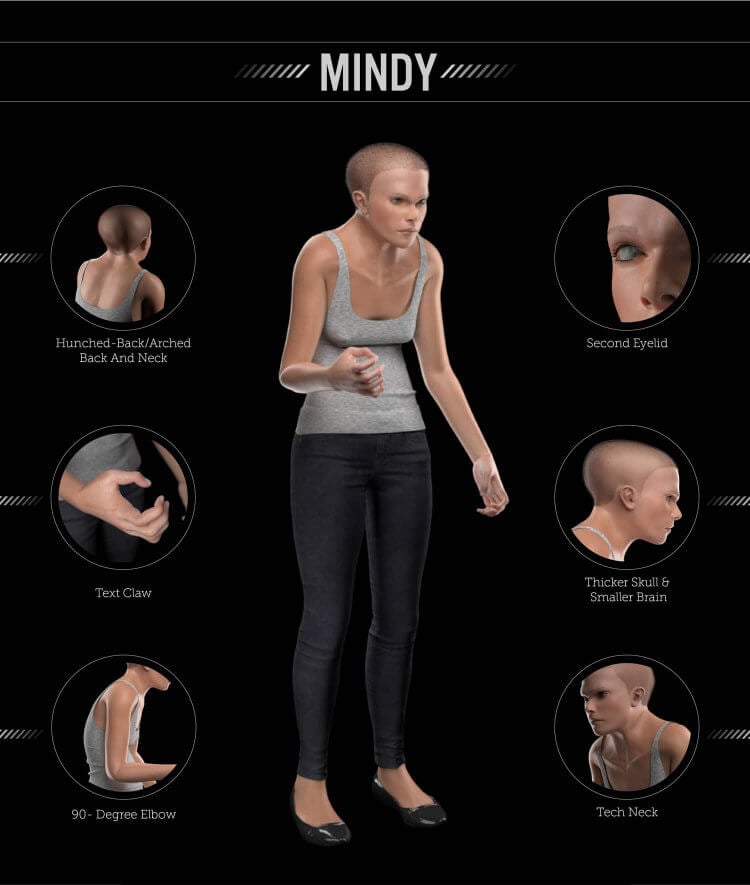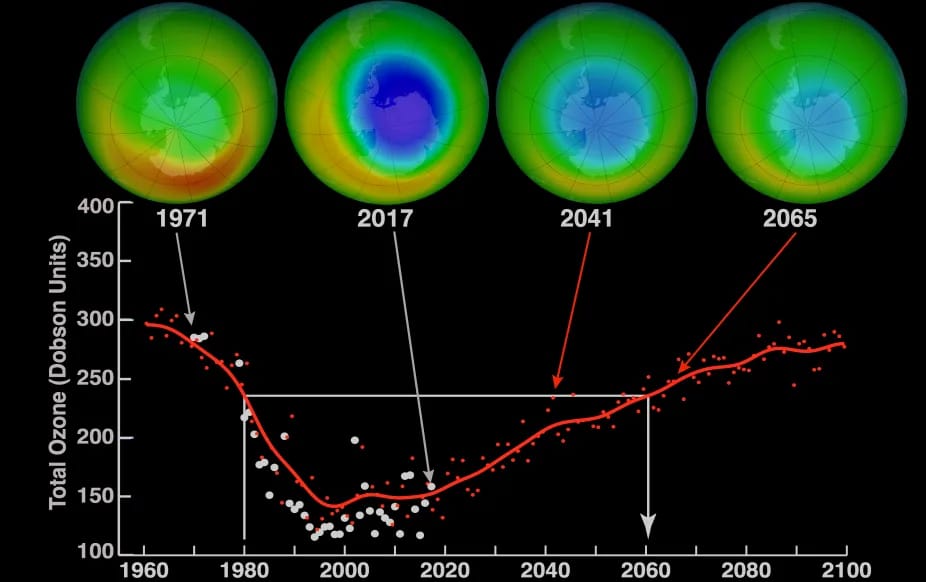The Future-Human – An Evolutionary Prediction

Pixar has made a long-standing tradition of commentating on human behaviours, past, present and future, in the guise of cleverly animated motifs meant to entertain children and, for those more intellectually endowed, awaken a desire to eliminate ignorance. Knowingly or unknowingly (knowing Pixar, most likely the former), WALL‑E made a point to show humanity what we, human beings, may look like in 800 years – virtually helpless blobs of flesh atop barely adjoined bones, essentially “giant babies” reliant on their evolved technology for every human functionality. This may well be a prediction of our evolutionary progression, but how true does it really hold?
How Did We Get Here?
In a world that came into being 4.5 billion years ago, the dawn and birth of Homo sapiens is a relatively recent event, at only 300,000 years old. To scale, if we consider the age of the Earth equivalent to a person at the age of 100, our species has been around for 0.0067 years – a grand total of 2 days! In spite of this short lifespan, the Homo sapiens has not remained unchanged – although our distinct species emerged 300,000 years ago, distinctively different from the other descendants of the early primates, evolution has remained a constant process, owing particularly to climate, culture, and biological diversification.
Early Homo sapiens came about following the Homo erectus, with the Neanderthals and Denisovans our closest ancient relatives, thought to share common ancestors (Hendry, n.d.). According to the Natural History Museum, Homo sapiens fossils could be readily distinguished from the closely related Neanderthals by their appreciably shorter, higher and considerably rounder skulls, distinguishable pelvis, even down to their miniscule earbones and a recognizable chin (Stringer, n.d.). This is not to say our species have stagnated in our evolution – modern humans are entirely different from our ancient ancestors.
To start off, modern humans have (interestingly) smaller, lighter skeletal structures than relatives in the millennia prior. Even more interestingly, we harbor comparatively weaker, less developed jaws with smaller teeth – a direct result of increasingly available soft foods, in turn a direct result of the development of agriculture. (Smithsonian National Museum of Natural History, 2024) More shocking, however, is the reduction in brain size – according to the Australian Museum, the typical human brain found 100,000 years ago was about 100–150 cubic centimeters (cc) larger than present day, at 1500cc, unlike the typical 1350cc found today (Dorey, 2021). This evolutionary upgrade (we have not, in fact, gotten dumber, so an upgrade it is) is believed to be a result of the evolution and birth of language, which quite literally rewired human brains, causing a shrinkage to boost efficiency in a more metabolically organized, compact neural system (Fox‑Skelly, 2024).
The obvious question is this: why does this matter to us now? Will our brains keep shrinking as humanity continues to evolve? More pressingly, will modern innovation and progression cause any significant difference in human evolution, as was first caused by domestication and the expansion of agriculture? And to revisit the original question, is WALL‑E right about how we will look in 800 years?
The Path We’re On Right Now
It is an understatement to say that the modern everyday looks nothing like it did in the centuries prior. The dawn of the sedentary lifestyle has changed the landscape of our lives. According to a Harvard study comprised of 15,000 participants, middle-aged individuals spend about 10.7 hours a day sitting (Corliss & Cannon, 2024), and the US National Health and Nutrition Examination Survey found that 58% of non-sleeping time amongst 20–59 year-olds was spent in sedentary (i.e. minimal energy consuming) activities – a significantly higher percentage than in our more physically active ancestors (Owen, 2010). As one would expect, these lifestyle changes have already lent themselves to bodily changes, particularly influencing human health, with increasing body-mass and obesity, a rising trend in cardiovascular issues, diabetes, and the works. But more prominent than all other present forms of lifestyle-altering innovation has been the rise and prevalence of modern smart technology. Cell phone-less lives are the unrealistic musings of fantasizers – in terms of reliance on tech, we’re well on our way to the WALL‑E human lifestyle. The design and ensuing usage of these pieces of technology, involving craned necks and bent postures, is entirely unlike the tools available to our ancestors, and will undoubtedly play a noticeable part in the future of human evolution.

In keeping with this line of thought, Toll Free Forwarding has created a 3D model “Mindy”, predicting how a human being, in the year 3000, is likely to appear, and the sight is not particularly optimistic. Mindy, with a wide neck, hunched back and severe techneck, might be the eventuating result of prolonged smartphone, laptop and tablet use, in conjunction with increasingly inactive lifestyles. Dr. K. Daniel Riew provides context for these changes, citing how “the muscles in the back of the neck have to contract to hold your head up” when bending down to look at a mobile or laptop screen. Dr Nikola Djordjevic explains Mindy’s “claw hands” as a result of cubital tunnel syndrome, caused by the way we hold our phones, straining various joints. Alongside “text claw”, we can expect to see “90 degree elbows” – once again a result of the way we hold our phones. Mindy’s second eyelid is an adaptation to resist eye damage by incoming blue light from screens, preventing excessive exposure. (Daily Mail, 2022)
Of course, 800 years into the future is a short telescope to look through. BBC Earth, looking down a much longer, million-year long route, suggests that human evolution will favor a reduction in body size, a further bid to optimize energy consumption. With increasing rates of migration and the general population trends of the current world, skin colour is likely to darken as well. (Jones, n.d.) The human brain has gotten consistently smaller as we have evolved, and more like than not, it will continue to do so, once again to optimize energy, but possibly also due to climatic changes: in an ever-warming planet, a smaller brain would dispense less heat, making it far more viable to survive and thrive. (Fox‑Skelly, 2024)
Whether it be in 800 or 800,000 years, the one certainty is that the world will have changed and evolved, and perhaps with it, so will we. At the end of the day, as is always the case with predictions, the reality is that only time can tell, and unless time travel becomes a reality, we need not worry about weathering these storms of change ourselves. And as is always the case with evolution, as the saying goes (even if it is wrongly attributed to Darwin), It is not the strongest of the species that survives, nor the most intelligent that survives. It is the one that is most adaptable to change.
(Darwin Project, n.d.)
References
- Corliss, J., & Cannon, C. P. (2024, March 1). How much do you sit, stand, and move each day? Harvard Health. Retrieved June 21, 2025, from https://www.health.harvard.edu/heart-health/how-much-do-you-sit-stand-and-move-each-day
- Daily Mail. (2022, November 3). Grotesque model 'Mindy' reveals what humans could look like thanks to our reliance on technology. Daily Mail. Retrieved June 21, 2025, from https://www.dailymail.co.uk/sciencetech/article-11385935/Grotesque-model-Mindy-reveals-humans-look-like-thanks-reliance-technology.html
- Darwin Project. (n.d.). The evolution of a misquotation | Darwin Correspondence Project. Retrieved June 21, 2025, from https://www.darwinproject.ac.uk/people/about-darwin/six-things-darwin-never-said/evolution-misquotation
- Dorey, F. (2021, February 8). How have we changed since our species first appeared? Australian Museum. Retrieved June 21, 2025, from https://australian.museum/learn/science/human-evolution/how-have-we-changed-since-our-species-first-appeared/
- Fox‑Skelly, J. (2024, May 18). The mystery over why human brains have shrunk over time. BBC. Retrieved June 21, 2025, from https://www.bbc.com/future/article/20240517-the-human-brain-has-been-shrinking-and-no-one-quite-knows-why
- Hendry, L. (n.d.). Who were the Neanderthals? Natural History Museum. Retrieved June 20, 2025, from https://www.nhm.ac.uk/discover/who-were-the-neanderthals.html
- Jones, L. (n.d.). What will humans look like in a million years? BBC Earth. Retrieved June 21, 2025, from https://www.bbcearth.com/news/what-will-humans-look-like-in-a-million-years
- Owen, N. (2010). Sedentary Behavior: Emerging Evidence for a New Health Risk. PubMed Central. Retrieved June 21, 2025, from https://pmc.ncbi.nlm.nih.gov/articles/PMC2996155/
- Smithsonian National Museum of Natural History. (2024, January 3). Homo sapiens | The Smithsonian Institution's Human Origins Program. Retrieved June 20, 2025, from https://humanorigins.si.edu/evidence/human-fossils/species/homo-sapiens
- Stringer, C. (n.d.). Are Neanderthals the same species as us? Natural History Museum. Retrieved June 20, 2025, from https://www.nhm.ac.uk/discover/are-neanderthals-same-species-as-us.html
Similar Post You May Like
-

CFCs, HFCs and their long, troubled history
At its peak, the ozone hole covered an area 7 times larger than the size of Europe, around 29.9 million km2, and was rapidly expanding
-

The Origin of Universe: Deciding point where it all began!
Let us unravel and surf through the ideas throughout ages to understand what the universe and its origin itself was to its inhabitants across history.
-

The Artemis Program
Inspired by the Greek goddess of the Moon, twin sister to Apollo, the artimis program was named on 14 May 2019 by Jim Bridenstine.






